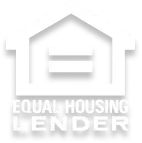
The Investor’s Guide to
DSCR Loans
DSCR Loans
Investing in rental properties can be a powerful way to build wealth, and financing plays a crucial role in making that dream a reality.
Investing in rental properties can be a powerful way to build wealth, and financing plays a crucial role in making that dream a reality.
For investors looking to purchase rental or short-term vacation properties (Airbnb), a Debt Service Coverage Ratio (DSCR) loan can be an excellent option.
In this guide, we’ll break down how DSCR loans work, their benefits, and who they’re best suited for, as well as their pros and cons. Let’s dive in!


What is a DSCR Loan?
A DSCR loan is a type of real estate financing specifically designed for investment properties.
A DSCR loan is a type of real estate financing specifically designed for investment properties.
Unlike traditional loans that rely on your personal income and employment history, DSCR loans focus on the property’s income potential. In simple terms, lenders use the Debt Service Coverage Ratio to determine whether the property’s income can cover the loan payments.
The DSCR formula is:
DSCR = Property’s Net Operating Income (NOI) ÷ Debt Obligations
Net operating income is the projected rental income minus expenses such as taxes and insurance (but not the mortgage payment)
A DSCR of 1.0 means the property’s income exactly covers its debt obligations. Most lenders require a DSCR of 1.2 or higher to approve the loan.
For example:
Let’s say you were buying a $500,000 property that is expect to rent for $3,000 per month. It has $4,000 a year in property taxes and $1,500 per year in insurance. The Net Operating Income would be $36,000 – $5,500 = $30,500 NOI.
Who is a DSCR Loan Best For?
Real Estate Investors:
Whether you’re buying your first rental property or expanding your portfolio, DSCR loans are tailored for property investors.
Short-Term Rental Owners:
Planning to invest in vacation rental properties? DSCR loans are a great fit for income-generating properties on platforms like Airbnb and Vrbo.
Self-Employed Individuals:
If traditional income verification is a hurdle, DSCR loans provide an alternative solution.
Investors Scaling Quickly:
For those looking to acquire multiple properties, DSCR loans offer streamlined approval based on the property’s income.
Pros and Cons of DSCR Loans
PROS
No Personal Income Verification:
Simplifies the application process for self-employed individuals or those with complex finances.
Focus on Cash Flow:
Approval is based on the property’s income potential, not your personal financial situation.
Faster Approvals:
With fewer documentation requirements, the process is typically quicker.
Flexibility:
Can be used for various property types, including vacation rentals and multifamily units.
CONS
Higher Interest Rates:
DSCR loans often come with higher interest rates compared to traditional mortgages.
Larger Down Payment:
You may need to put down 20-25% of the property’s purchase price.
Property-Dependent:
If the property’s cash flow doesn’t meet the DSCR threshold, the loan may not be approved.
Limited Availability:
Not all lenders offer DSCR loans, so you’ll need to work with a knowledgeable team like YourWayLoan.
Is a DSCR Loan Right for You?
Consider a DSCR loan if you:
However, if you’re purchasing a primary residence or don’t have a property with predictable income, a DSCR loan may not be the best fit.
However, if you’re purchasing a primary residence or don’t have a property with predictable income, a DSCR loan may not be the best fit.

Next Steps

Connect with the YourWayLoan Team:
Our experienced professionals can guide you through the DSCR loan process and help you find the best financing solution for your investment goals.
Analyze Potential Properties:
Focus on properties with strong cash flow to meet DSCR requirements.
Get Pre-Qualified:
The YourWayLoan team will assess your options and provide pre-qualification to streamline your property search.
Close Your Loan:
Once approved, you’ll be ready to purchase your next investment property and start generating income.







